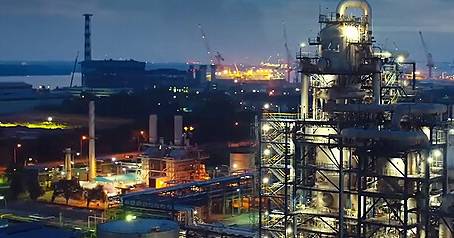Exploring Unique Custom Natural Indigo Fabrics for Creative Design Projects
The Allure of Custom Natural Indigo Fabric
In today's world, where sustainability and individuality are increasingly valued, custom natural indigo fabric stands out as a unique and vibrant choice for designers and consumers alike. Known for its deep, rich blue hue and eco-friendly production methods, this fabric not only offers aesthetic appeal but also carries a rich cultural history and environmental significance.
The Origins of Indigo Dye
Indigo dyeing has roots that date back thousands of years, with origins traced to various ancient civilizations around the world, including those in India, Africa, and South America. Unlike synthetic dyes, natural indigo is derived from the indigo plant, primarily *Indigofera tinctoria*. The process of extracting the dye is intricate, involving the fermentation of the leaves to create a solution that can be used for dyeing fabrics. This labor-intensive method not only results in a stunning blue color but also ties the fabric to centuries of tradition.
The Rise of Customization
In an age where mass production dominates, the desire for unique, custom-made items is growing rapidly. Consumers are increasingly rejecting uniform products in favor of something that reflects their personality and preferences. Custom natural indigo fabric provides an excellent solution. Artisans and designers can create bespoke pieces tailored to individual specifications, whether it’s a specific pattern, weight, or texture. Using natural indigo dye opens up a plethora of creative possibilities, allowing for the creation of one-of-a-kind textiles that truly stand out.
Environmental Impact
One of the most compelling reasons to choose custom natural indigo fabric is its environmental benefits. The dyeing process for synthetic fabrics often involves harmful chemicals and a significant amount of water, leading to pollution and resource depletion. In contrast, natural indigo is biodegradable and relatively eco-friendly compared to its synthetic counterparts. Moreover, many artisans who specialize in natural dyeing practices are committed to sustainable methods. By utilizing local plants and eco-conscious production strategies, they help preserve traditional crafts while minimizing their environmental footprint.
Health Benefits
custom natural indigo fabric

In addition to its eco-friendliness, natural indigo is also believed to be safer for the skin. Many synthetic dyes contain toxic substances that can cause allergic reactions or other health issues. Fabrics dyed with natural indigo, on the other hand, are often hypoallergenic and better suited for sensitive skin. This aspect has made natural indigo an increasingly popular choice among consumers seeking safe and comfortable clothing options.
Cultural Significance
Natural indigo fabric is more than just a stylish option; it is a piece of cultural heritage. Different regions have various traditional techniques and patterns associated with indigo dyeing. For instance, Shibori, a Japanese manual tie-dyeing technique, and Batik, which is prevalent in Indonesia, both utilize indigo but in unique ways that represent their respective cultures. By choosing custom natural indigo fabric, consumers not only support artisans but also honor and celebrate the rich tapestry of history, skill, and creativity that underpins these textile traditions.
The Future of Custom Natural Indigo Fabric
As sustainability continues to gain traction as a vital consideration in the fashion industry, the demand for custom natural indigo fabric is expected to grow. Fashion designers are increasingly incorporating these textiles into their collections, appealing to environmentally conscious consumers who seek to make a positive impact through their purchasing choices. The marriage of traditional craftsmanship with modern design sensibilities creates exciting opportunities for innovation in the textile industry.
Moreover, with advancements in technology and growing interest in indigenous practices, it may soon be possible to blend traditional dye techniques with new sustainable innovations, leading to an even more diverse and vibrant palette of options in the custom fabric arena.
Conclusion
Custom natural indigo fabric embodies the intersection of art, culture, and sustainability. It offers a vibrant alternative to conventional synthetic textiles while celebrating a rich history and encouraging eco-friendly practices. In choosing this fabric, consumers not only express their individuality but also support a more sustainable and ethical fashion industry. As we move forward, the allure of natural indigo will continue to captivate those who appreciate beauty and craftsmanship in every stitch.
-
The Timeless Art of Denim Indigo Dye
NewsJul.01,2025
-
The Rise of Sulfur Dyed Denim
NewsJul.01,2025
-
The Rich Revival of the Best Indigo Dye
NewsJul.01,2025
-
The Enduring Strength of Sulphur Black
NewsJul.01,2025
-
The Ancient Art of Chinese Indigo Dye
NewsJul.01,2025
-
Industry Power of Indigo
NewsJul.01,2025
-
Black Sulfur is Leading the Next Wave
NewsJul.01,2025

Sulphur Black
1.Name: sulphur black; Sulfur Black; Sulphur Black 1;
2.Structure formula:
3.Molecule formula: C6H4N2O5
4.CAS No.: 1326-82-5
5.HS code: 32041911
6.Product specification:Appearance:black phosphorus flakes; black liquid

Bromo Indigo; Vat Bromo-Indigo; C.I.Vat Blue 5
1.Name: Bromo indigo; Vat bromo-indigo; C.I.Vat blue 5;
2.Structure formula:
3.Molecule formula: C16H6Br4N2O2
4.CAS No.: 2475-31-2
5.HS code: 3204151000 6.Major usage and instruction: Be mainly used to dye cotton fabrics.

Indigo Blue Vat Blue
1.Name: indigo blue,vat blue 1,
2.Structure formula:
3.Molecule formula: C16H10N2O2
4.. CAS No.: 482-89-3
5.Molecule weight: 262.62
6.HS code: 3204151000
7.Major usage and instruction: Be mainly used to dye cotton fabrics.

